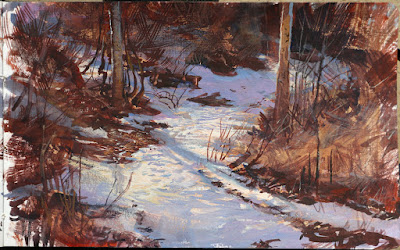 |
| Swedish artist Anders Zorn working on his painting Mora Marknad (The Mora Fair) 1892. |
Zorn had joined a group of dignitaries for a polite evening that included the artists Korovin and Polenov, the Governor of Moscow, and a lot of high-society ladies. They were all interested in meeting the famous artist-foreigner.
As they gathered around the great round table to drink tea, one of the ladies declared:
"'I tell you, the paintings these days,' one lady said. 'Awful! All brushstrokes and brushstrokes, it doesn’t make sense. Horrible. I have been to an exhibition in Petersburg lately. They said, these are the Impressionists. A haystack is drawn, and, just imagine, blue… Impossible, awful. We have hay, and, I think, everywhere. Green, is it not? And his is blue! And yet more brushstrokes and brushstrokes… A famous, they say, artist-impressionist, Frenchman. It’s God knows what! But I'm glad you are not an Impressionist. Hopefully, we don’t have them and thank God.'"
"'I see,' Zorn blinked somewhat uneasily. 'Yes. But Velasquez is also an impressionist, my lady,' he said.
"'Really?,' the ladies were surprised.
"'Yes, and he' (Zorn pointed at me) 'is an impressionist.'

"'You don't say, really?' The ladies were surprised again. 'But he painted Sophia’s portrait so smoothly!'
"On the road back home Zorn asked me: 'Is this high society?'"
"'Yes,' I said.
"'How strange.'
"Zorn became silent. And the next morning he packed his briefcases and left for his home in
-----
From the book "Константин Коровин вспоминает..." (Konstantin Korovin reminisces...) Thanks, Mel.
Wikipedia: Anders Zorn















































